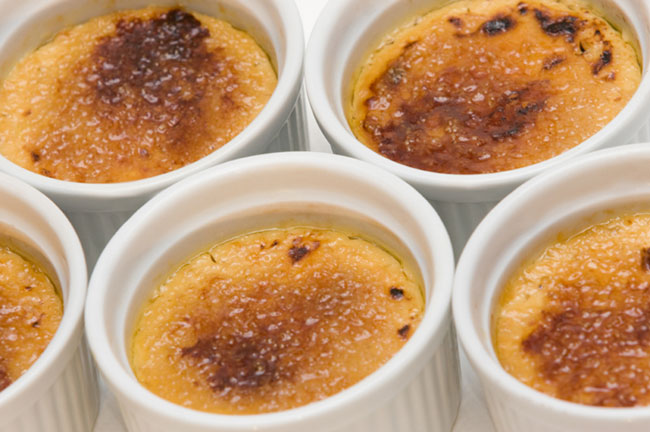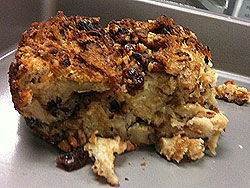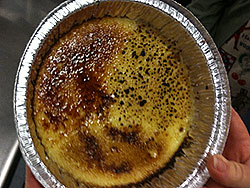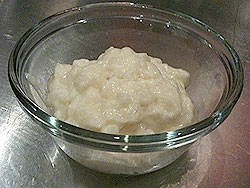
This week in class we covered custards. Custard is rich and thick, consisting of whipped and cooked milk, sugar and eggs. The first part of the class we briefly discussed food poisoning and safe food handling. While not directly related, it is interesting and an important subject. Many times food poisoning is no fault of the restraint or food supplier but the customer, who does not know how to properly cool off and store leftovers.
Tempering is very important with custards. It is critical to add sugar to the eggs, which allows for them to coagulate at a higher temperature. When not mixed with sugar egg white coagulates between 144° and 149°F, egg yolk coagulates between 149° and 158°F (same for whole eggs). When sugar is added and the proper technique utilized eggs can be brought to a boil without coagulating (212°F). Reducing or increasing the amount of sugar will change the texture of the finished product.
Like with most baked goods the quality of your ingredients is important. This is especially true with cream and milk. Grocery stores have all sorts of cream on their shelves, most of them expensive and poor quality. (You can get good quality cream at a much cheaper price at Costco or Smart & Final, the quantity will be much higher so it will need to be frozen). When a recipe calls for cream it’s important to use the right kind of cream. Usually, the cream needed is what is referred to as “heavy cream” or “manufacturers” cream. With milk, if it’s not stated one should use whole milk. Some recipes call for half and half as well (50% whole milk and 50% heavy cream). All other types should be avoided unless called for. Using the wrong dairy will change the fat content, changing the taste, texture, moisture, and mouthfeel of your finished product.
Content of fat in dairy:
- 36% – 40% Heavy/Manufacturers cream
- 30% – 36% Heavy Whipping Cream
- 28% – 30% Whipping Cream
- 10% – 15% Light Whipping Cream
- 11% Half and Half
- 4% Whole Milk
- 2% Reduced-fat milk
- 1% Low-fat milk (1%)
- 0% Skim milk/non-fat milk
Heres what we made (the Creme Brulee shows, starting from the top right clockwise, how brown sugar, white sugar and sugar in the raw melt on it):

 Bread Pudding
Bread Pudding Creme Brulee
Creme Brulee Pot de Creme
Pot de Creme Rice Pudding
Rice Pudding